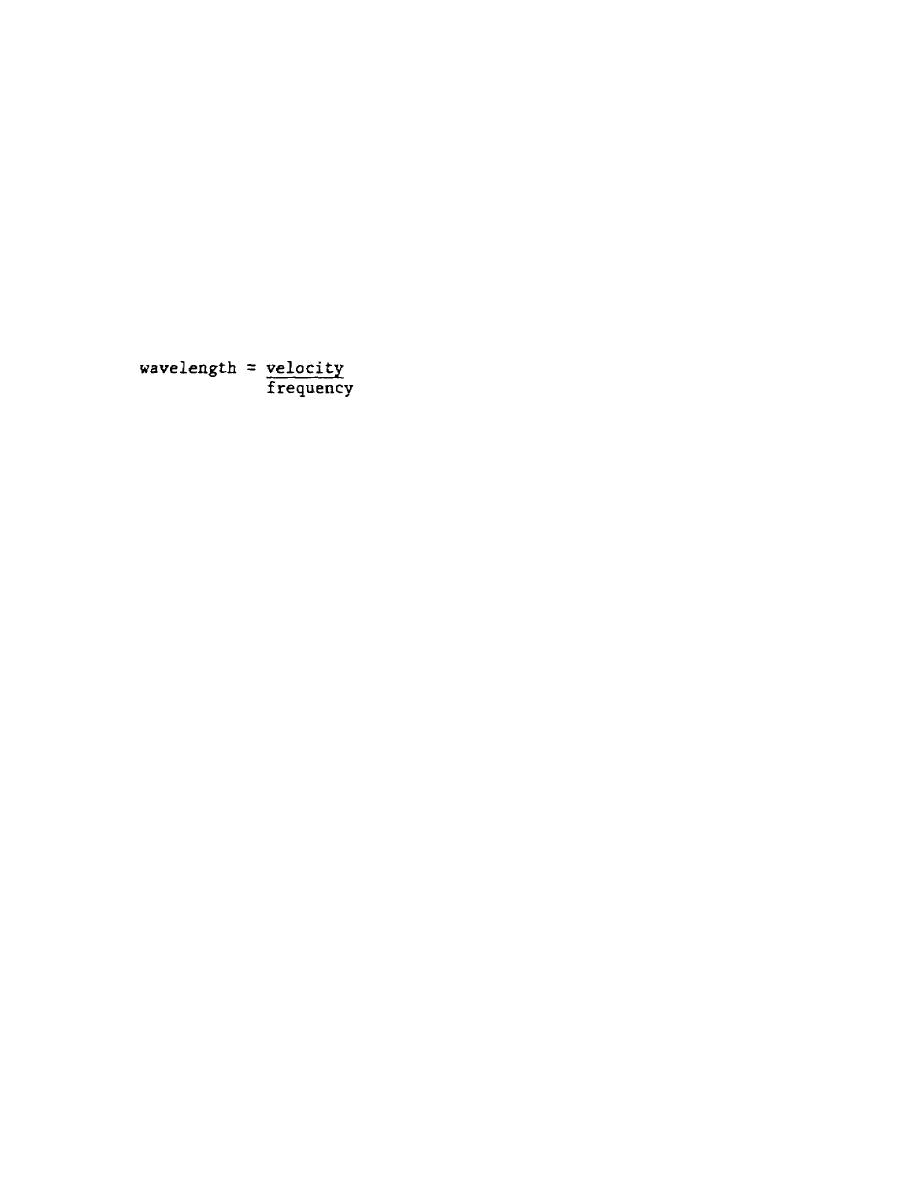
d. A hertz (cycle) is a complete set of pressure values, from one positive peak to the next, anywhere along the
path of the wave. The maximum pressure value, measured from the zero axis, is called the amplitude of the wave.
e. Wavelength is the actual distance between successive condensations or successive rarefactions along the path
of the sound.
f. The time required for 1 hertz is called the period of the wave.
g. Frequency is the number of hertz per second.
h. The velocity of a sound wave is the distance the energy travels in a unit of time, usually expressed as feet per
second. The velocity of sound in air is 1,090 feet per second at 0€ C, and 1,130 feet per second at 20€ C. By comparison,
light and electromagnetic waves travel at a velocity of 186,000 miles per second.
i. The wavelength of a sound wave can be calculated by the following relationship:
j. The frequency range of audible sound is approximately 20 to 20,000 hertz per second.
k. In air and at a velocity of 1,100 feet per second, the wavelength of the audible frequencies ranges from 55 feet
to approximately two-thirds of an inch.
l. Sound waves must be simple or complex. A simple sound wave is a wave made up of a single frequency
varying sinusoidally. A complex sound wave is one made up of more than one frequency.
m. The lowest frequency present in a complex waveform is called the fundamental frequency. Whole-number
multiples of the fundamental frequency of a sound wave are called harmonics or overtones. The fifth harmonic of a
1,000-hertz sound is 5,000 hertz.
23



 Previous Page
Previous Page
